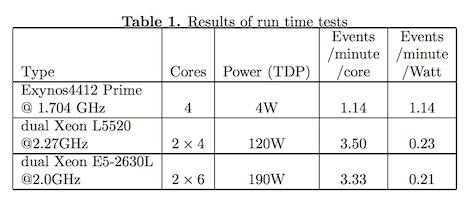HP’s Marc Hamilton writes that, as anticipation grows for using ARM processors for HPC, a new paper from a team of LHC researchers is showing promising results.
The CERN team ported the entire CMS software stack, including 125 external support packages, to an ARMv7 (32 bit) based system. The results: an amazing 4x the events/minute/watt compared to two reference Xeon x86 systems.
Today’s modern processors using on the order of 20 pico joules (pJ) of energy for a 64-bit floating-point operation. A 256 big on-die SRAM access uses about 50 pJ. But an off-die link, even an efficient one like you might use to connect the processors in a two-socket server, consumes on the order of 500 pJ. Increasingly, HPC architectures, whose design was for decades dominated by optimizing floating point performance, will need to focus on minimizing data movement. Future HPC systems are likely to be at the forefront of single socket server adoption, be they ARM or x86 based, in the years ahead.
Read the Full Story or download the CERN Paper: Initial Explorations of ARM Processors for Scientific Computing.





